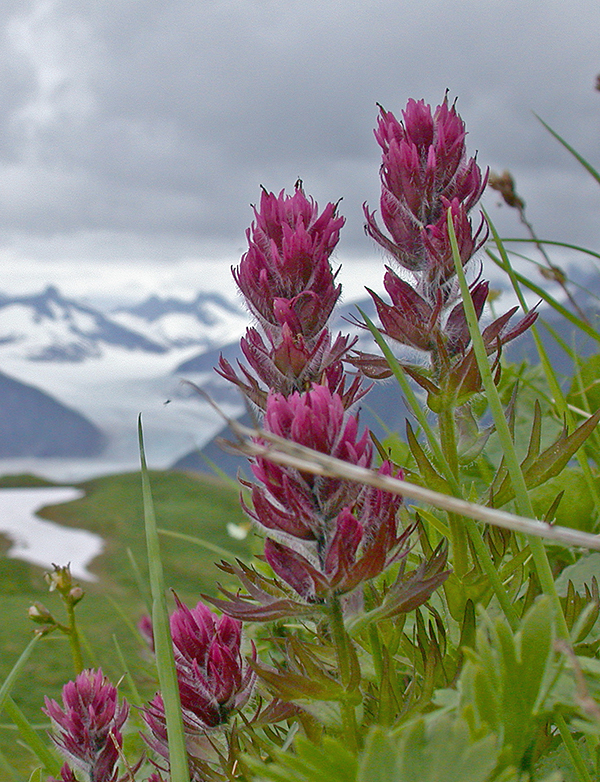Most of us think of plants as being green, at least in summer. The green comes from the pigment chlorophyll, which uses sunlight to knit carbon dioxide and water together, forming carbohydrates that the plant can metabolize. Lucky for us, oxygen is a by-product of the process. There are a few local plants, however, that don’t have chlorophyll, or at least very little, so they don’t do photosynthesis and have to obtain their energy elsewhere. Here are examples:
Northern ground cone. This interesting Beringian plant goes by the reverberating scientific name of Boschniakia rossica, named for a Russian botanist Boschniak and presumably someone named Ross. Such names reflect nothing about the plant itself, obviously, and only show who knew whom. That’s a shame, because this plant is rather weird and wonderful.
Northern ground cone got its common name because, to some people, the above-ground plant resembles a pine cone. It is common in certain places around here, mostly where there are alder trees. Lacking chlorophyll, it cannot synthesize carbohydrates for itself. Northern ground cone is entirely parasitic, getting its nutrition from other living plants, especially alders but also other species.
The brownish spike that emerges from the ground in summer is the inflorescence, bearing numerous small flowers. When mature, the spike produces huge numbers of tiny seeds.
The plant is reputed to have some medicinal value for humans (although, like many plant medicines, it has some toxic properties too), but part of my interest in it stems from observing that it seems to be a favored food item for bears. In the Dredge Lake area, for example, I often see wide swaths of ‘rototilling’, showing where bears have been foraging for northern ground cone. Bears seek out the underground base of the spike and generally leave behind the spike itself. The stem-bases are not notably rich in basic nutrients such as nitrogen, phosphorous, potassium, or calcium, and probably provide carbohydrates. When bears have been eating lots of ground cone, their scats look (to me) rather like mushy cracked-wheat porridge.

The tiny flowers are accessible to small insects, which are sometimes seen to visit, but it is apparently not known if they are pollinators. A different species of ground cone is reported to be self-pollinating, and a little fly sometimes attacks the flowers of that species. But the story for northern ground cone is yet to be discovered.
Pinesap. This is another strange plant that lacks chlorophyll. Pinesap (alternatively, Dutchman’s pipe) grows under conifer trees. It seems to be much rarer than ground cone in our area, as I have almost never seen it around here. It is sometimes said to be saprophytic, obtaining nutrients from decaying vegetation, but the reality is more complex. This plant and its close relatives are obligately dependent on mycorrhizal fungi whose underground filaments connect to the roots of nearby trees. The fungi draw nutrients from the host trees and delivery them to the pine sap plants. Thus, the pine saps are indirectly parasitic. Pine saps have yellowish or reddish stems, with yellowish or red-tinged flowers usually bent over to one side. When the fruits mature, however, they are upright on the stem. Bumblebees are reported to be the most important pollinators.
Certain local orchids are also saprophytic. We have two species of coral-root orchids, both of which are said to be saprophytic, but again the arrangement may be more complicated. In addition to needing mycorrhizal fungi for seed germination, these plants may, like the pine sap, actually obtain nutrition via their associated fungi that drain nutrients from nearby host plants. In addition, one coralroot orchid is said to have small amounts of chlorophyll and thus synthesize some of its own carbohydrates. Coralroots may be pollinated by small flies, such as dance flies, but probably also have the capacity for self-pollination.

